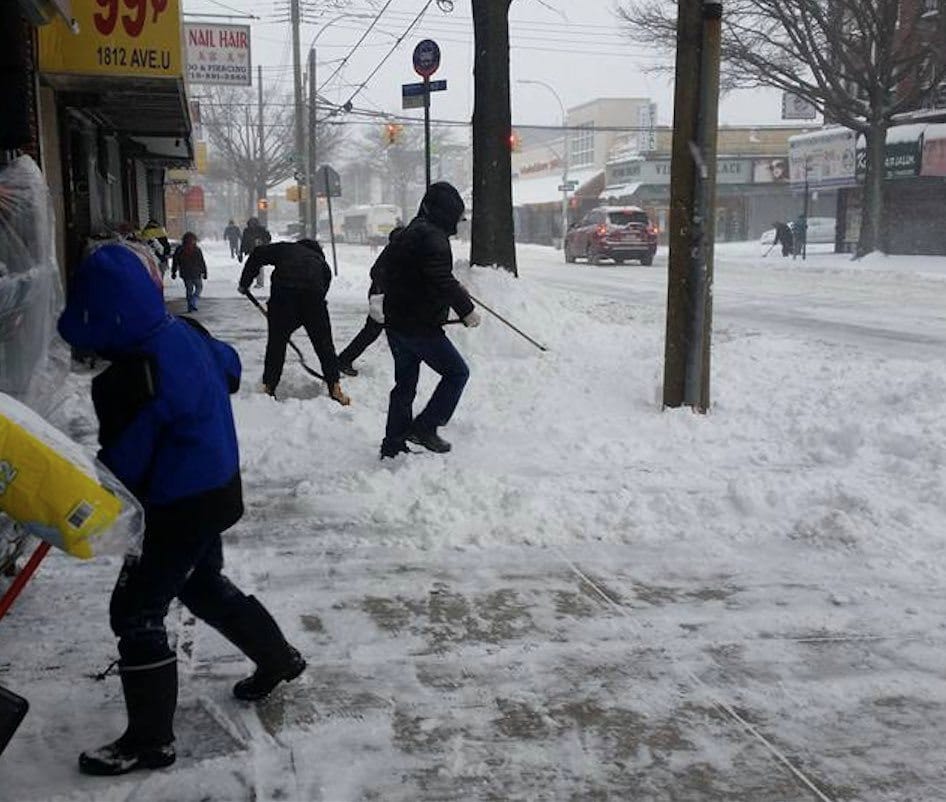Snow Alert For Tomorrow Noon!


The New York City Department of Sanitation has issued a Snow Alert for Thursday, November 15, 2018 at noon, and they are expecting 3 inches of snow.
Here’s what the Department of Sanitation wants you to know:
When do salt spreaders start working?
Salt spreaders are the first line of defense. Many salt spreaders are prepositioned before the storm starts. They spread a mix of rock salt and calcium chloride when a trace amount of snow, or other frozen precipitation, has fallen.
Does DSNY pre-treat streets with salt?
Generally, DSNY does not find pre-treatment effective as vehicles riding over dry salt remove it from the center of the street where it is needed.
When are snow plows used? How do they work?
Plows may be pre-positioned before the start of a storm and begin operating once nearly two inches of snow has accumulated. Plows are not designed to scrape the street to blacktop. The plow is set slightly off the ground so the truck will not “trip” on uneven streets or manhole covers. Remember, a plowed street will not show clear to the blacktop. This is to be expected. A combined approach of salting roadways and using plows is most effective in heavy snowfall.
Who is responsible for cleaning snow and ice from the sidewalk?
Owners, lessees, tenants, or other occupants are responsible for clearing snow and ice from sidewalks. Snow and ice should NOT be pushed in to a street or crosswalk. Try to clear a 3 to 4 foot path. Corner properties should clear a path to the crosswalk, including pedestrian ramps. Those who do not comply can face fines. If possible, consider assisting elderly or disabled neighbors
Why does temperature matter?
Rock salt begins to lose effectiveness once temperatures dip below 24 degrees Fahrenheit, but DSNY adds calcium chloride to increase the salt’s effectiveness. Residents must be mindful that when temperatures dip, snow and ice removal will take more time.
Why do plows push snow to the right?
On two-lane streets, plows push snow to the right to avoid blocking the oncoming left lane with a ridge of snow. If plows did not push snow to the right on one-way streets, accumulated snow would make left turns at intersections impossible.
In what order are streets plowed?
DSNY uses a sectoring system to determine the order in which city streets are plowed. First, critical streets are plowed. Critical streets include expressways, bus routes, streets with hospitals and schools, and other roadways to facilitate the movement of fire trucks, ambulances, police and other emergency vehicles. Streets formally known as secondary and tertiary are now known as “sectored streets” and are plowed according to a designated route. While DSNY relied on three designation categories in the past, the sectoring system achieves routing efficiencies by eliminating redundant travel mileage between street segments on a given route.
How can salt spreaders and plows be tracked?
New Yorkers can view PlowNYC at maps.nyc.gov/snow to determine a street’s designation and the approximate time that has elapsed since a DSNY salt spreader or plow last appeared. Please note that weather conditions, construction projects, closures, or other events may cause actual conditions to differ from the data presented. In addition, the maps may contain inaccuracies due to variations in signal strength and the AVL system.
When will garbage and recycling be picked up when it’s snowing?
Garbage and recycling collection may be delayed or suspended, depending on the intensity of the storm. This information will be available via 311, the DSNY website, and on social media outlets.




